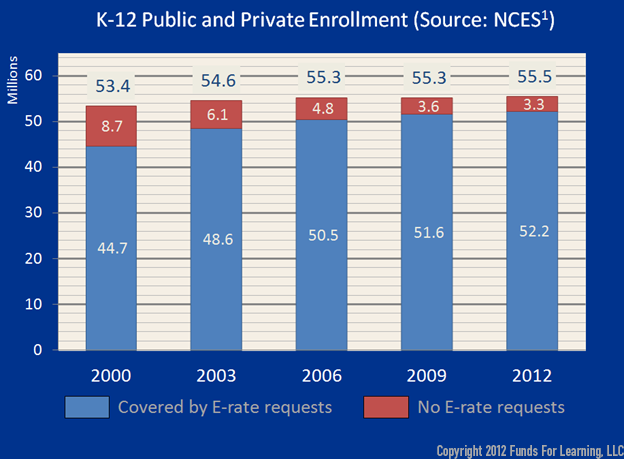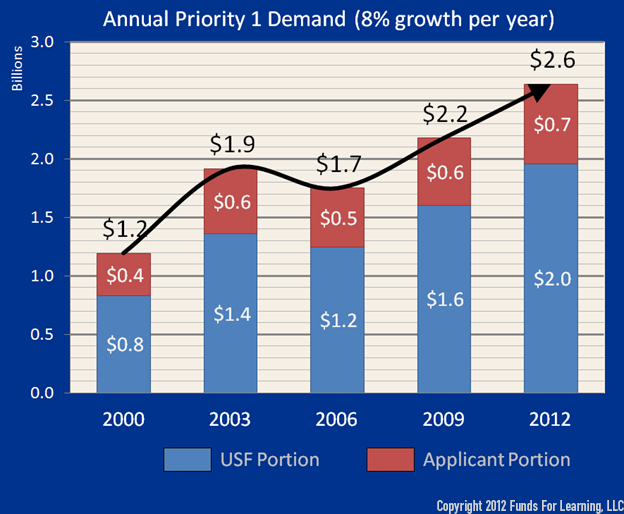In Funding Year 2012, school and school district applicants requested approximately $5 billion in E-rate discounts on connectivity services and communications infrastructure. These E-rate funding requests represent over 52.2 million K-12 students nationwide.
In its most recent Digest of Education Statistics, the National Center for Education Statistics (NCES) projected that total student enrollment in public and private elementary and secondary schools in fall 2010 would be approximately 55.35 billion¹. When we take a look at the average growth in student enrollment from 2007 to 2010, we can estimate that total student enrollment in 2012 should be around 55.5 million students. With 52.2 million of those students represented on FY 2012 E-rate applications, we can see that E-rate program funds directly impact approximately 95% of the K-12 students in the United States. Further, the percentage of total student enrollment referenced on E-rate applications has risen steadily over the past twelve years:

With the requested amounts and rate of participation in the E-rate program at an all-time high, schools are sending a clear signal that advanced connectivity and infrastructure services are vital to their success – a theme which was echoed by over 90% of the applicants who responded to Funds For Learning’s 2012 applicant survey.
Nevertheless, the availability of E-rate funds for all applicants in future years is becoming increasingly uncertain. Requests for funding now outpace the annual funding cap by almost 2:1, and the demand for connectivity services alone has more than doubled in the past twelve years:

The implications are clear: in order for E-rate funding to continue its direct and critical impact on over 95% of the K-12 students in the country, significant changes must be considered. Over the next few weeks, Funds For Learning will be taking a more in-depth look at how E-rate funds are distributed and utilized among school applicants, discussing the opportunities and challenges presented by potential changes to the program’s structure.
¹http://nces.ed.gov/programs/digest/d10/tables/dt10_002.asp?referrer=list
